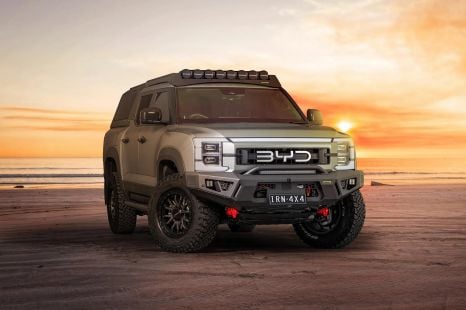

William Stopford
BYD Shark 6 gets higher payload thanks to GVM upgrade
3 Hours Ago
A Ford Ranger Raptor isn't meaty enough for you? How about a 500kW+ supercharged V8 American ute?
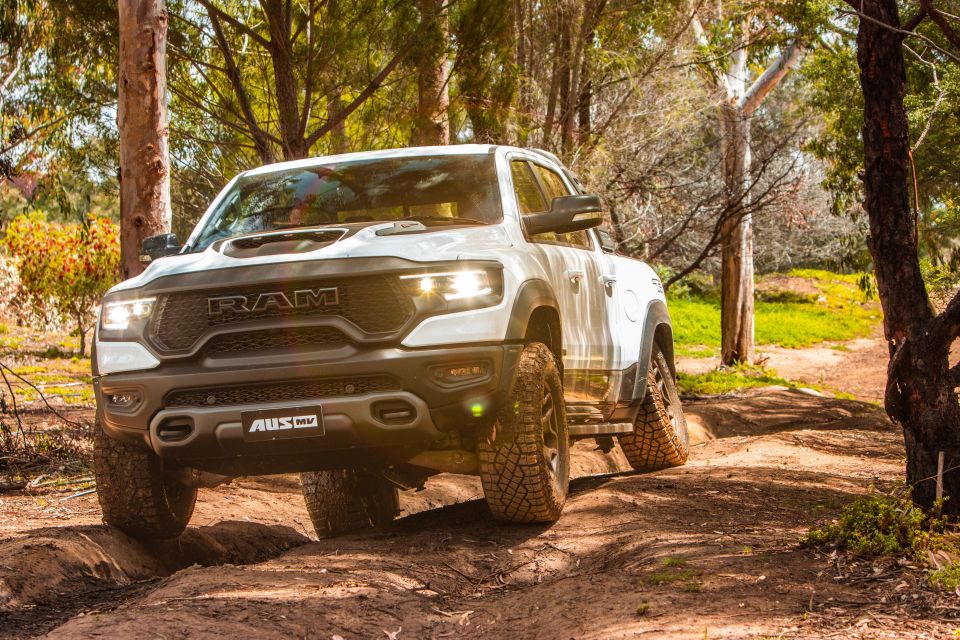


Quickly see how this car stacks up against its competition. Select any benchmark to see more details.
Where expert car reviews meet expert car buying – CarExpert gives you trusted advice, personalised service and real savings on your next new car.
A supercharged V8 is not something anybody needs in their lives, but it’s certainly something plenty of us want.
So why not package it in a monster truck, give the truck nostrils that light up, and round it out with the most epic exhaust note and supercharger whine this side of a highly-modified LS?
Well that’s what Ram has come up with in the 2022 Ram 1500 TRX. It features the brand’s hectic Hellcat supercharged V8 engine and is designed to cross the desert in the quickest time possible.
I know what you’re thinking – isn’t the Ram 1500 only built in left-hand drive? Yes, it is. But there are a number of Australian companies converting these from left- to right-hand drive, and we got behind the wheel of a local conversion by AUSMV – more on this process later.
Pricing the Ram 1500 TRX is hard work for importers because they will import cars either directly from Stellantis, or they will purchase cars in volume through dealers for export to Australia.
Buying from the USA comes with the same complications as buying in Australia at the moment. Semiconductor shortages have created huge demand and little supply, which has caused dealers to hike the price of vehicles like the TRX by up to US$30,000.
That cost flows on to the consumer here in Australia through taxes that are added on to the increased import cost, and then subsequent final sale price.
As a result, the pricing can be fluid. At the moment, the base price of the 1500 TRX is $203,400 plus on-road costs for a 1500 TRX with no additional options.
While AUSMV previously allowed customers to customise their vehicle, it now offers customers a list of vehicles already in the country or en route for selection – it simplifies the process and guarantees a car will be available for the customer.
Our test vehicle had around $30,000 worth of options fitted, which increased the price to around $235,000 plus on-roads.

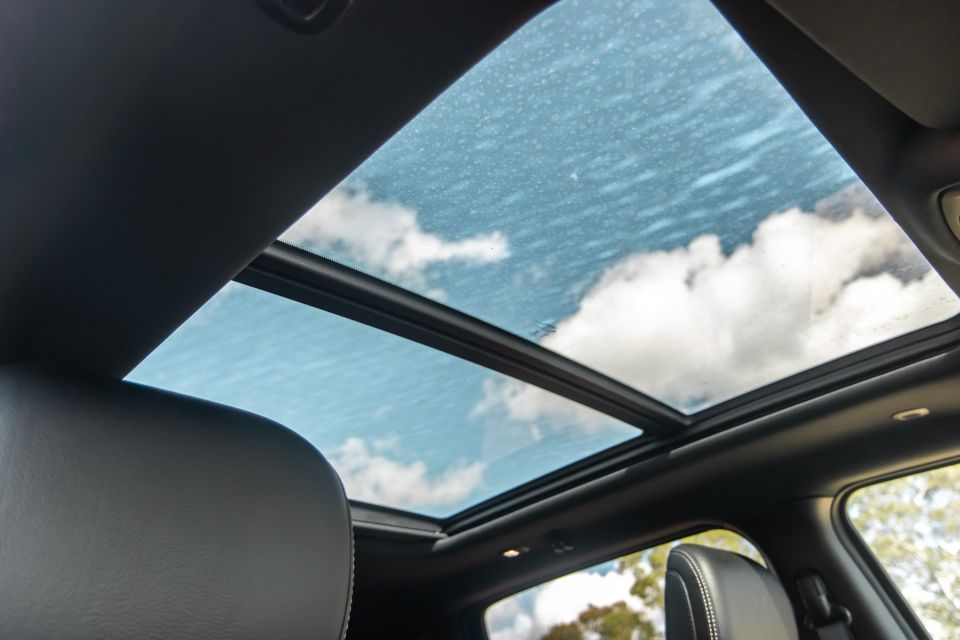
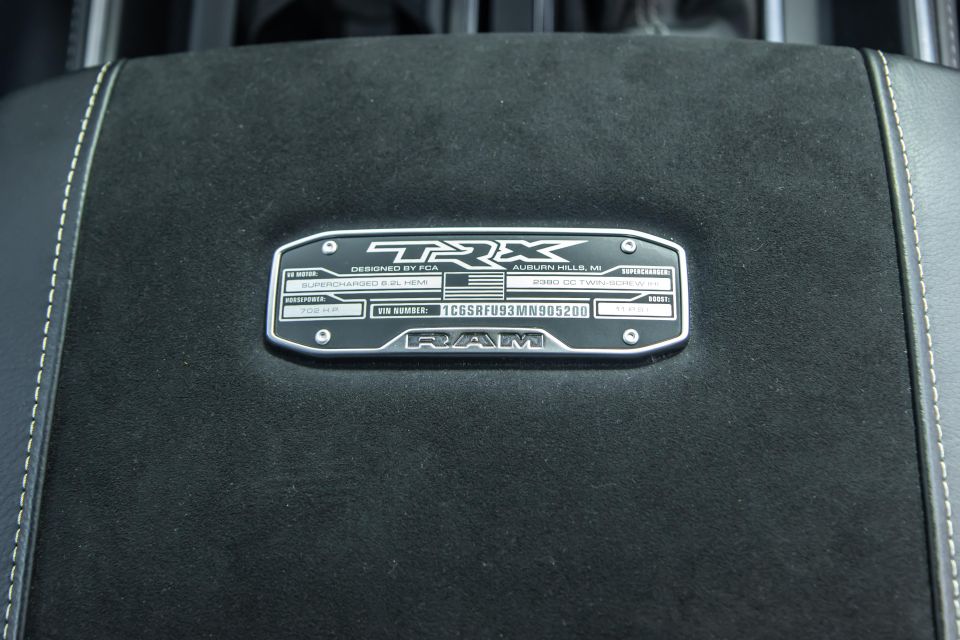
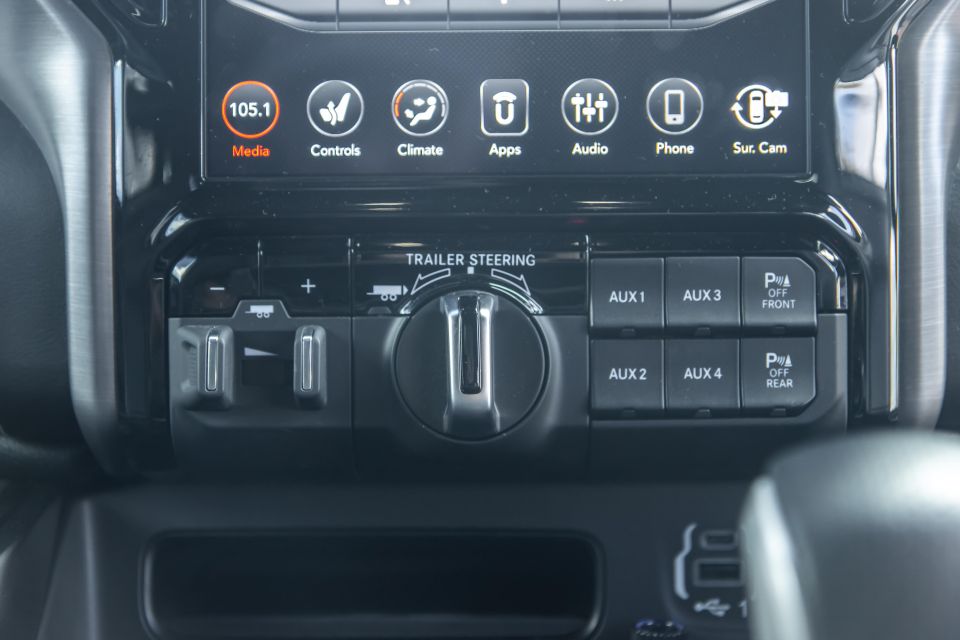
Buy your new car without the stress. It's fast, simple and completely free.

Great service from Travis and team, second time I have used this business would not hesitate to recommend them to anyone
Craig C.
Purchased a Ford Ranger in Sunshine Coast, QLD
CarExpert helped Craig save $7,224 on his Ford Ranger, now let us save you on your next new car.
Get your BEST priceEven if you snag an entry-level 1500 TRX, the standard equipment list is comprehensive.
Standard features include:
Additional features added to our vehicle included things like dual-pane sunroof, passenger power seat adjustment, heated seats and steering wheel, a leather interior, power-adjustable pedals, LED tray lighting, a surround-view camera, front/rear parking sensors, remote start and Australian towing package, among others.
There are also six colours to pick from.
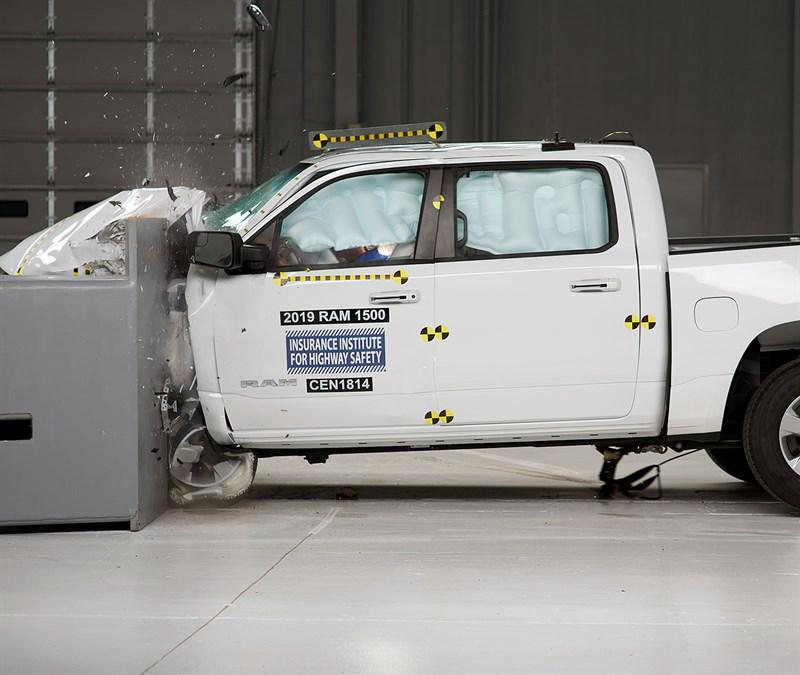
The Ram 1500 hasn’t been crash tested in Australia, but it has been crashed by the Insurance Institute for Highway Safety (IIHS) in the USA where it scored a 2021 Top Safety Pick.
During crash testing it scored ‘Good’ ratings in all areas except headlights and anchor point ease of use. Good is the best of four safety scores titled Poor, Marginal, Acceptable and Good.
Standard safety equipment includes low- and high-speed autonomous emergency braking (AEB), reversing camera as well as front and side airbags.
Optional safety technology include blind-spot monitoring and rear cross-traffic alert, pedestrian detection for the AEB system, a 360-degree camera system and front/rear parking sensors.
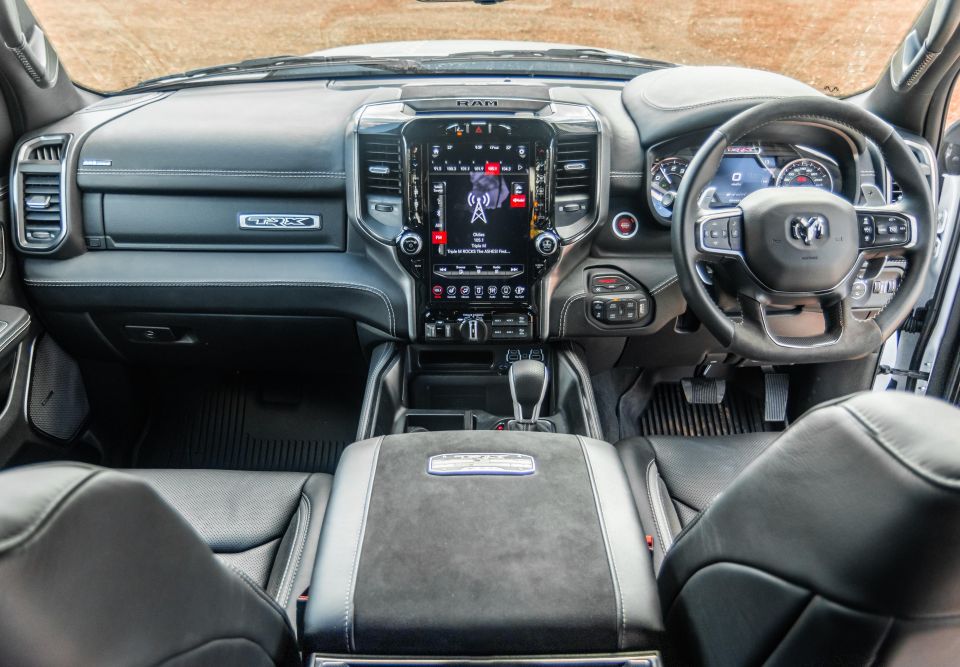
One of the things I love about American trucks is the expanse of interior room. They make other locally-sold dual-cab utes feel like toys. To put the size into context, the width of the 1500 TRX comes in at 2235mm wide, and a Ford Ranger is 1977mm wide – so you certainly feel the extra width sitting inside the cab.
You get a huge centre console and more than enough room for three adults to sit side-by-side in the second row.
The leg- and headroom in the second row is also crazy thanks to the vehicle’s external dimensions. It’s 5916mm long and 2055mm high (A Ford Ranger is 470mm shorter and 207mm lower in the roof), which means there’s acres of knee, toe and headroom available in the second row.
Clever storage beneath the second row and within the seat backs means you can hide valuables from being seen outside the vehicle. Like the Nissan Navara you’ll also find a sliding rear window to allow extra ventilation through the car.


Up front the finish and build quality feels excellent. The 1500 TRX is built in Michigan (some Ram trucks are built in Mexico) but the conversion work for AUSMV vehicles takes place in Queensland.
The company’s factory moves the steering wheel from the left of the car to the right. While it sounds like a simple process, it’s anything but. Some new parts need to be created inside the cabin to house switchgear and to make everything look right.
Then there’s the steering itself. AUSMV uses a patented Steering Transfer Technology that sees the original steering column turn 90 degrees beneath the passenger footwell, travel behind the vehicle’s dashboard, and meet with the steering wheel on the right-hand side of the car via another 90-degree turn.
It’s quite a clever setup and has been integrated nicely. It takes some proper poking around to see where the new setup sits and it doesn’t intrude into the engine bay, which means there are no new fresh holes cut or any other aftermarket work.


Central to the cabin is a 12-inch vertical display that has original Tesla Model S vibes to it. It was introduced by Ram in the latest Ram DT upgrade and it’s an impressive-looking setup.
The high-resolution screen is easy to use and quite fast as you transition through the menus. It’s fitted with AM/FM and DAB+ digital radio, but the DAB and satellite navigation don’t work in Australia. We ran into this issue with the Chevrolet Silverado 1500 Trail boss.
Our test vehicle featured the optional 19-speaker Harman Kardon sound system. It’s a cracker and fills in the silence when you’re doing a highway drive.
Both Apple CarPlay and Android Auto are included, and both require a cable to operate. There’s an aptly-named ‘RamCharger’ – a wireless phone charger – but it’s redundant if you drive around with your phone connected to smartphone mirroring all the time.
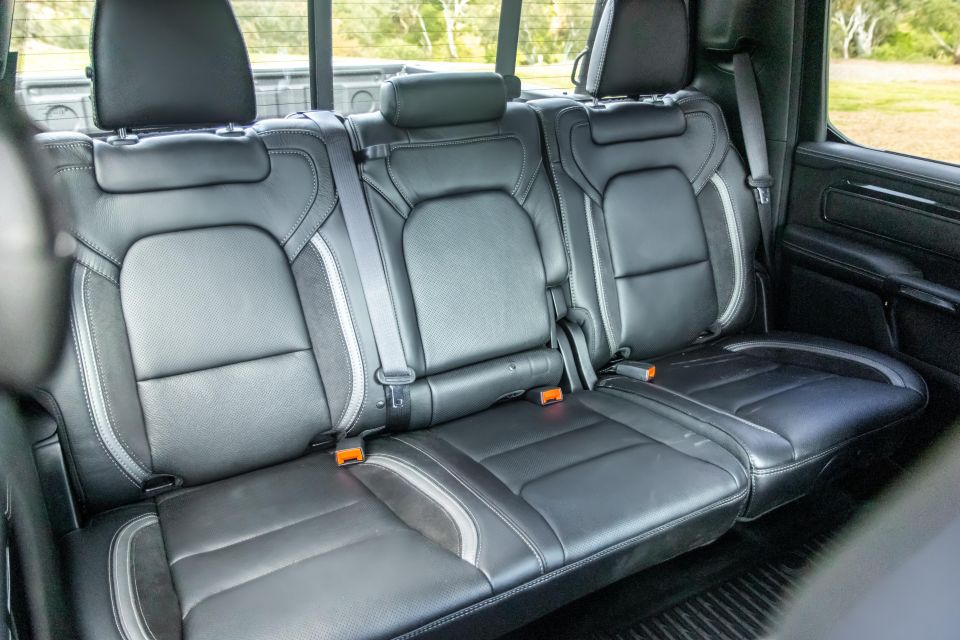


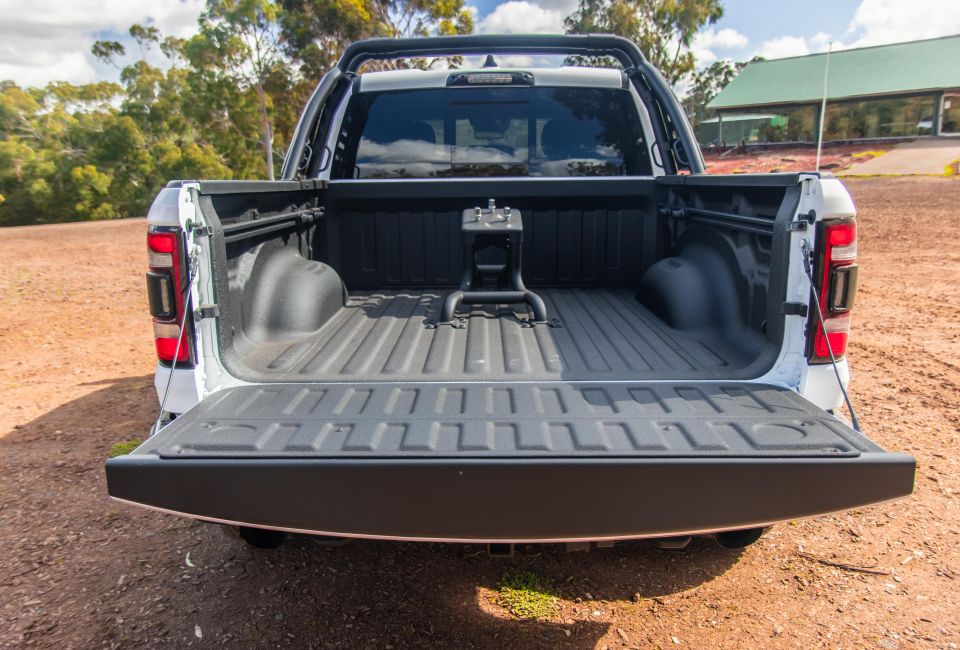
It’s a great inclusion, but it looks a little poxy on the vertical screen. It’s an issue most manufacturers with vertical displays face because there’s no easy way to package a horizontal smartphone mirroring system on a vertical display.
Some items can’t be seen on the screen from a distance because they are condensed to make way for context menus. Not a huge deal, but something worth pointing out.
Ahead of the driver is a 7.0-inch TFT display that includes a stack of trip computer and off-road information.
Tray dimensions come in at 1711mm long, 1295mm between the wheel arches and 543mm deep. Payload comes in at 600kg, but it can be upgraded as part of a GVM upgrade offered by AUSMV. If you’re towing there’s also a 3647kg braked towing capacity.

Powering the 1500 TRX is a 6.2-litre supercharged V8 petrol engine. It produces 523kW of power and 882Nm of torque, mated to an eight-speed Torqueflite automatic transmission with drive sent through a permanent four-wheel drive system.
The 1500 TRX uses a claimed 19.6 litres of fuel per 100km. With a mix of city, highway, and off-road driving, our average ended up sitting at around 28L/100km. It’s not a Toyota Prius and if that alarms you, it might not be the right truck for you.
On the upside, it uses a 125-litre fuel tank to ensure you don’t need to constantly sit at the pump.
In its standard driving mode, the vehicle splits torque 40/60 (front/rear), which moves to 45/55 in Snow mode, 45/55 in Tow mode, 30/70 in Sport mode, 25/75 in Baja mode, 45/55 in Mud/Sand mode, and 50/50 in Rock mode.
There’s a low-range transfer case and Dana 60 rear end with a lockable rear differential.
Ram claims a 0-60mph time of 4.5 seconds. We achieved a 0-100km/h (0-62mph) figure of around 5.0 seconds using launch control on a sealed surface.
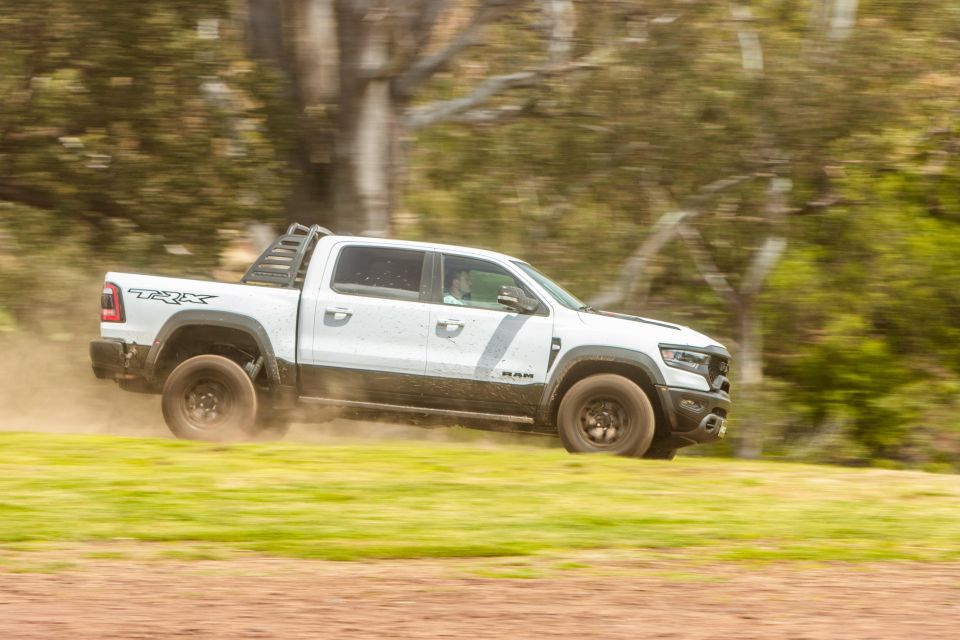
I’ve driven the Ford F-150 Raptor previously and absolutely loved almost everything about it. The Ram 1500 TRX takes it to another level – it’s hard to describe just how grunty it is from behind the wheel.
Despite weighing just over 2800kg, the 1500 TRX feels sprightly. It never feels like it’s napping and it’s more than happy to lean on its torque band thanks to the mammoth 2.8-litre twin-screw supercharger that runs at up to 11psi of boost pressure in standard trim.
When it needs to move, it will rifle back through the gears and deliver one of the sweetest sounds your ears will ever hear this side of a highly-modified supercharged LS. The supercharger whine is offensively loud, as is the meaty exhaust note – and that’s before you really get stuck into it.
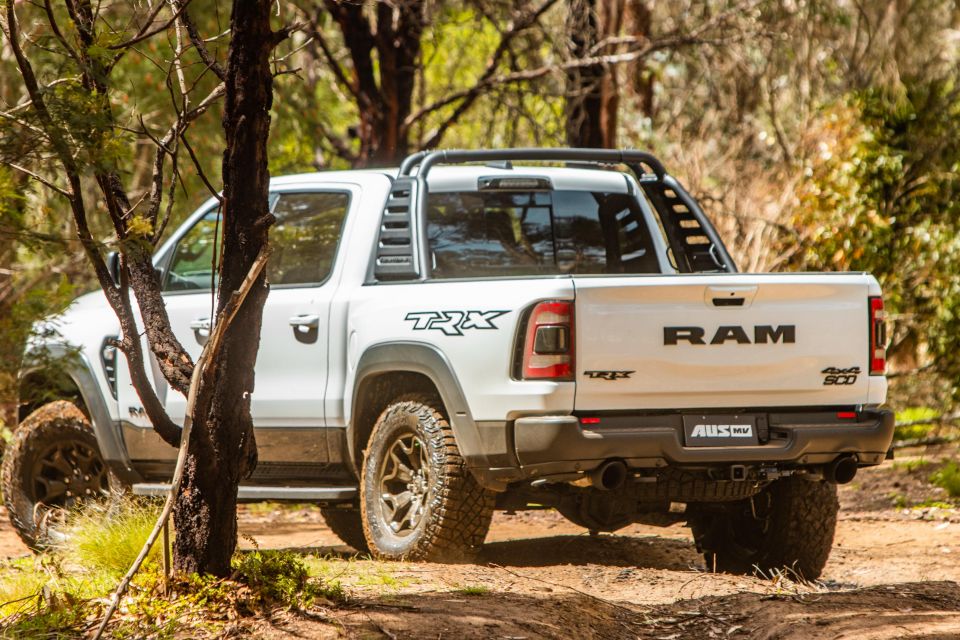
If you sink the throttle in and give it a proper crack, it’ll pin you back in the seat as it relentlessly heads toward its top speed of 190km/h.
It’s able to achieve these crazy speeds off-road thanks to the Bilstein suspension setup. The front axle is independent, while the rear axle is a coil-sprung live axle. All four corners use Bilstein Black Hawk e2 adaptive performance dampers.
Specifically designed for the TRX, they use a single-piece aluminium construction and a dual electronic proportional valves that offer independent control of rebound and compression at each corner. They use a remote nitrogen-filled reservoir serviced by stainless steel, braided high-pressure hoses.
The incredible part of the system is that each corner can cop up to 1000kg of force in a sudden hit (such as when performing jumps). And, to cater for these full-jounce scenarios, each corner has a Jounce Cut Off system that offers three zones of progressive bottom out. Additionally there’s a bump stop within the coil spring to prevent damage to the body where forces exceed the capacity of the shock absorbers.
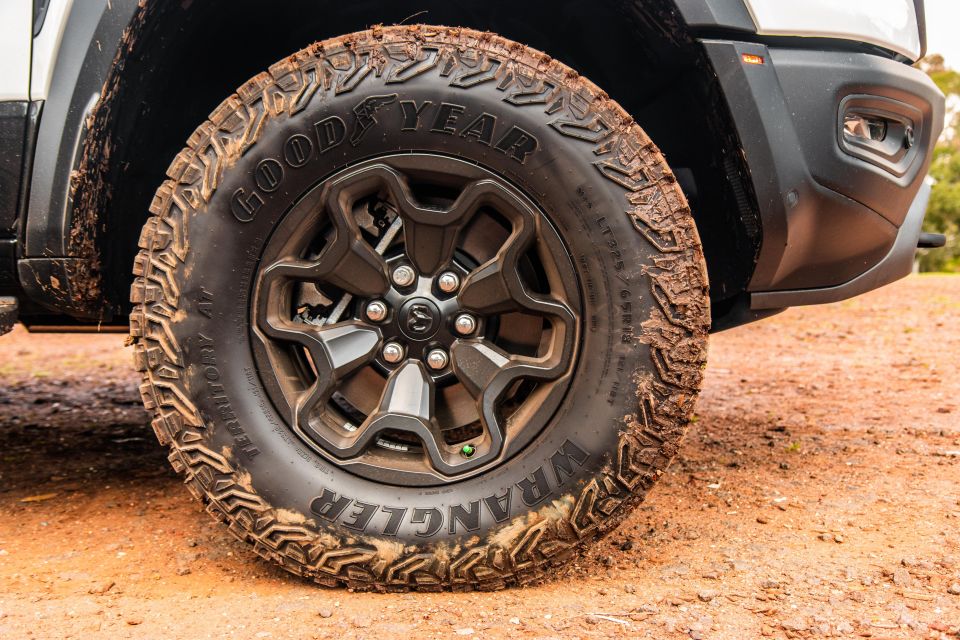
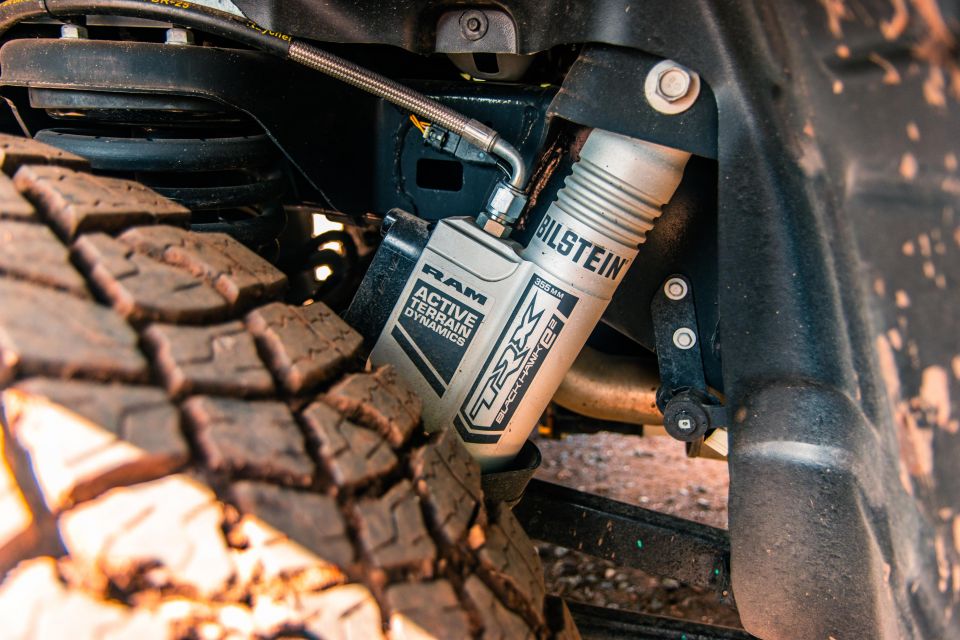
All of this means that when driving on a sealed surface, the ride has a great deal of comfort dialled in thanks to the versatility of the Bilstein adaptive dampers. But when you head off-road, it becomes an entirely different animal.
Oscillations at high speed are limited thanks to the damper and coil spring setup, while bumps are absorbed with minimal translation through to the cabin.
One of the downsides to a live axle is the creation of torque moments about the opposite axle during sharp bumps and lateral loads. For the most part the stability control does a good job of controlling sudden movements to the point where they are caught before the driver can respond.
Most impressively though is the 1500 TRX’s off-road performance. The approach angle comes in at 30.2 degrees, the departure angle at 23.5 degrees and ground clearance at 300mm. There are also rated recovery points at the front and rear.
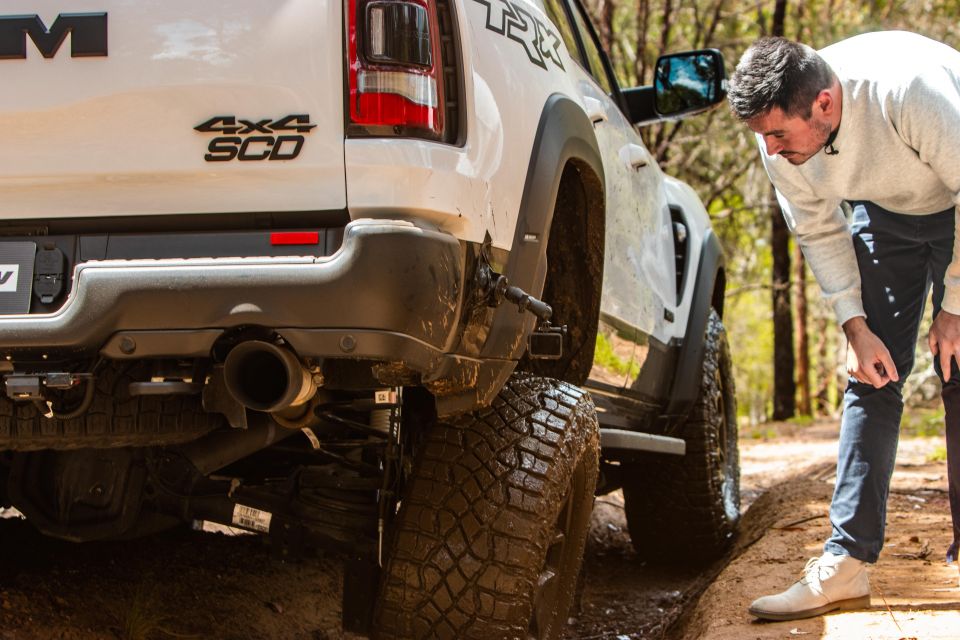
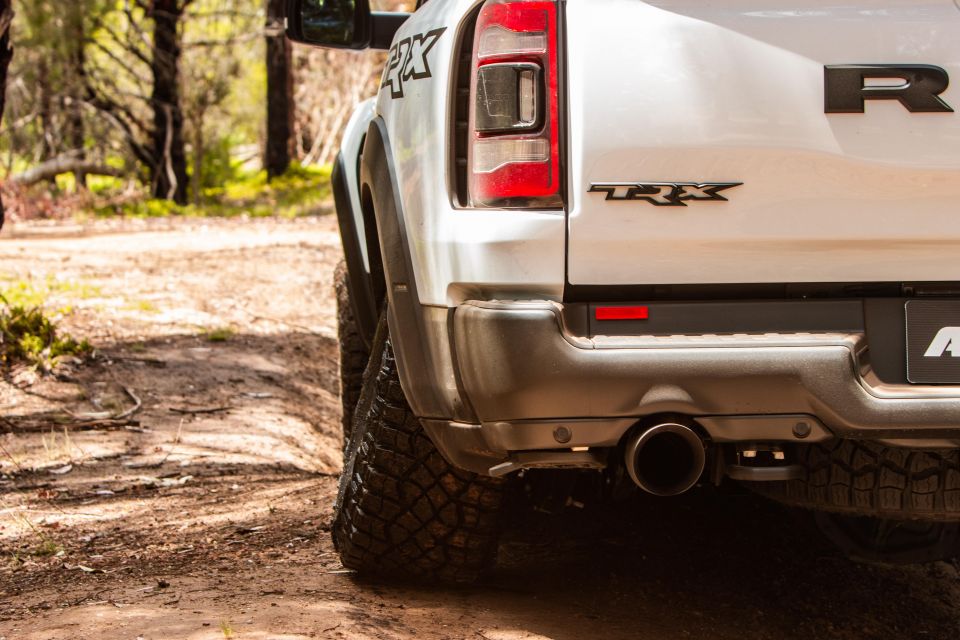
There’s a hill-descent control, off-road drive modes and the rear differential can operate in an open, limited-slip or locked mode. There’s no centre differential, although the vehicle can be locked into a four-wheel drive high-range mode.
If you watch our video content on the CarExpert YouTube channel, you’ll notice in most of our off-road reviews we test wheel articulation and the effectiveness of the rear axle when it comes to traction control systems and wheel articulation.
Our offset mogul is normally deep enough to fully extend the rear suspension on most vehicles. The 1500 TRX is one of the few vehicles that offers enough full wheel articulation to still have a contact patch with the lower part of the mogul, thus providing some form of traction.
Looking at the suspension when it is fully articulated gives you an idea of just how capable this vehicle is. With 325mm-wide all terrain tyres with 65-profile rubber and 18-inch alloy wheels there’s a huge contact patch with the ground.
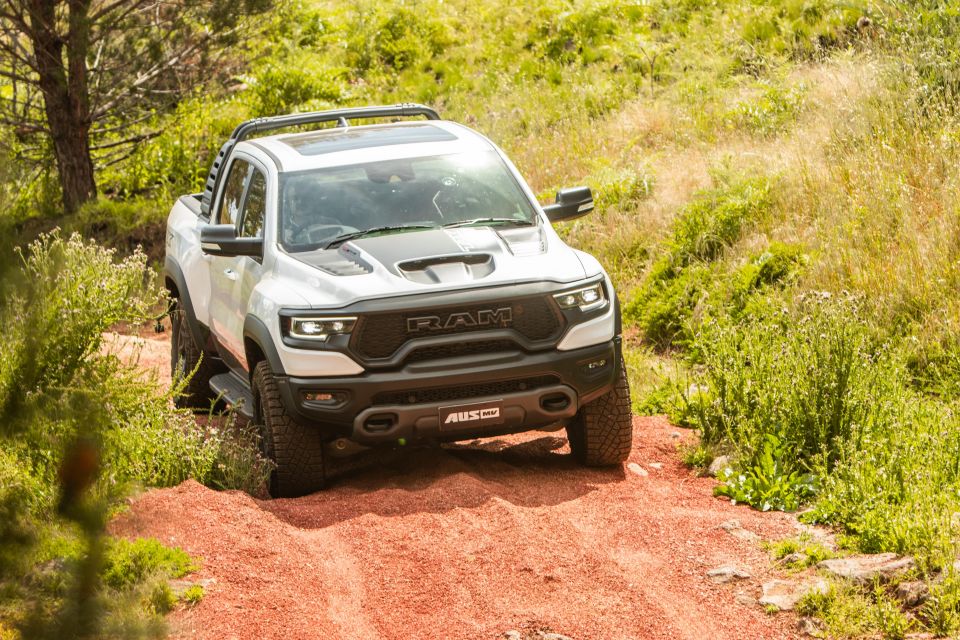
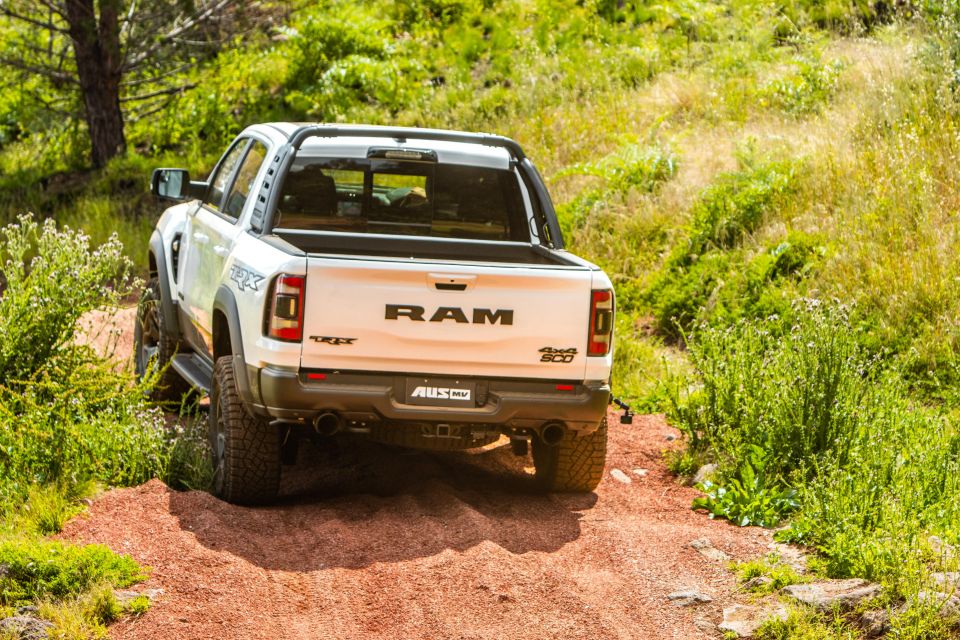
While we only did some light off-roading, there are plenty of videos on YouTube of people that have gone to town off-roading their TRXs and needless to say, these things can go virtually anywhere.
Back on sealed surfaces the 1500 TRX is compliant in and around town and is easy to drive. Visibility isn’t amazing, though.
While the seating position is great, it’s hard to see out the front when driving up hills, the wing mirrors could offer more perspective out the passenger side, and it’s too tall for most underground car parks.
How about the Steering Transfer Technology? It achieves the goal of the ridiculous predicament we’re in in Australia – you can’t drive a left-hand drive vehicle in Australia unless it’s of a certain age or meets a number of other strict guidelines.
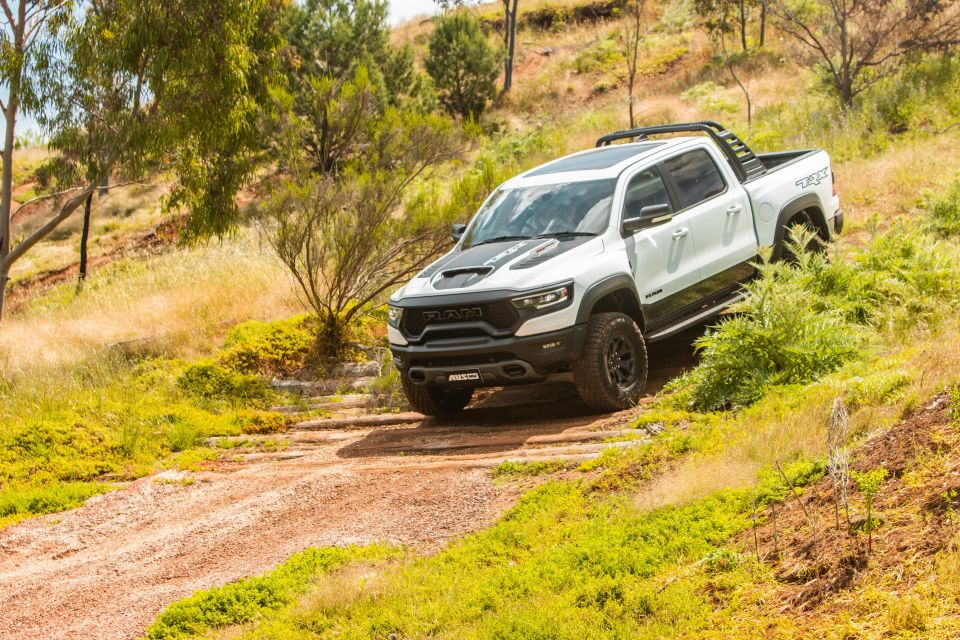
Where expert car reviews meet expert car buying – CarExpert gives you trusted advice, personalised service and real savings on your next new car.
That means companies like AUSMV need to create solutions to make this type of thing work. The patented technology used here does what it says on the box. Turning the steering wheel left makes the car go left and turning it right turns the wheels right.
That’s the easy part. The rest of the job is finessing steering feel to the point where it feels seamless and natural. This steering misses that mark. It loads up variably through the steering input and feels somewhat unnatural.
I’m saying this from the point of view that I haven’t driven a left-hand drive 1500 TRX and assume it feels more natural than the right-hand drive conversion. But I have driven a Chevrolet Silverado 2500 previously that was converted by the official importer and remember being equally unimpressed with the feel, so there’s a chance that’s what you’re lumped with when buying a right-hand drive conversion.
AUSMV performs bench testing on each steering transfer unit prior to it being installed in each vehicle. The technology has been in use since 2014.
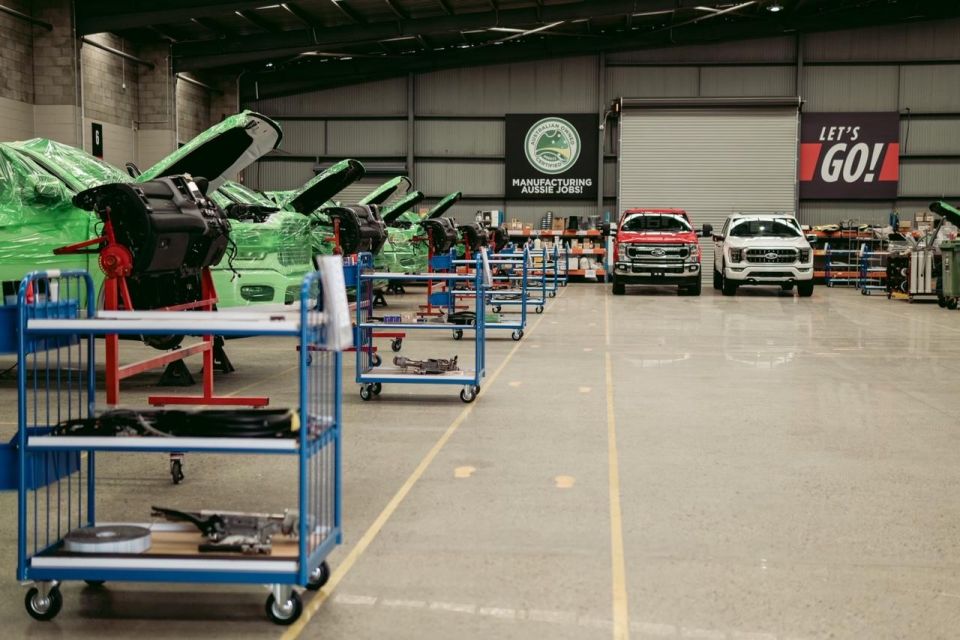
I’ll also caveat the above by saying most people are unlikely to notice anything different about the steering. But driving around 260 different car models each year, I’m more critical than the average person about steering feel.
We’ll shortly be driving the American Special Vehicles Ram 1500 TRX (the ‘official’ importer and converter of Ram Trucks to Australia), which is expected to use a different type of steering technology, so we’ll report back on how that feels in comparison.
In short, while the steering feel isn’t perfect, it’s perfectly usable and most people won’t realise it’s any different to a standard vehicle.
In terms of road noise at highway speeds, it’s pretty quiet inside the cabin. Outside of the occasional intrusion by the supercharger, there isn’t a great deal of tyre noise from the all terrain tyres and it’s a comfortable place to be seated over a long-distance drive.

AUSMV has just struck a deal with MyCar to have their vehicles serviced at the MyCar network of over 250 locations. As a comparison there are just under 300 Toyota dealerships and service centres in Australia.
Servicing occurs every 12 months and AUSMV vehicles come with a three-year, 100,000km warranty.
If your vehicle is serviced by the authorised AUSMV network, the warranty is extended to five years or 160,000km (this is two more years and 60,000km more than American Special Vehicles).
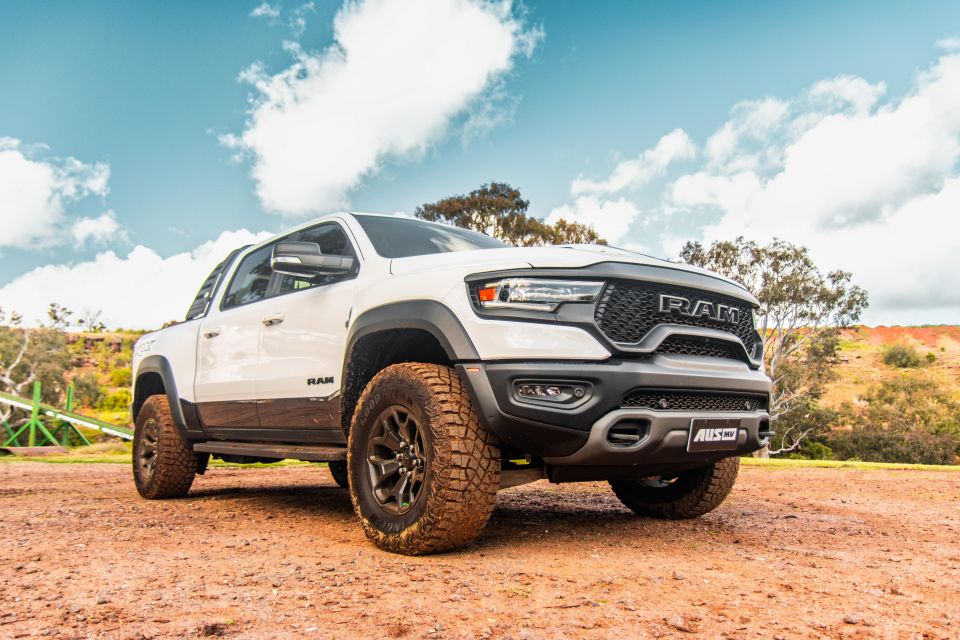
Buy your new car without the stress. It's fast, simple and completely free.

Great service from Travis and team, second time I have used this business would not hesitate to recommend them to anyone
Craig C.
Purchased a Ford Ranger in Sunshine Coast, QLD
CarExpert helped Craig save $7,224 on his Ford Ranger, now let us save you on your next new car.
Get your BEST priceI knew I’d love the Ram 1500 TRX, but I didn’t realise I’d love it this much.
It personifies all that is America and in a day and age where even big trucks like this are slowly adopting electrified technologies or full-electric drivetrains – something that will cease to exist in the not-too-distant future.
The supercharged V8 engine will send shivers down the spine of any V8 aficionado, while the design looks tough as nails against literally any other dual-cab ute.
Steering feel could be better, but it’s the only compromise you’ll notice in what is otherwise an excellent conversion job.
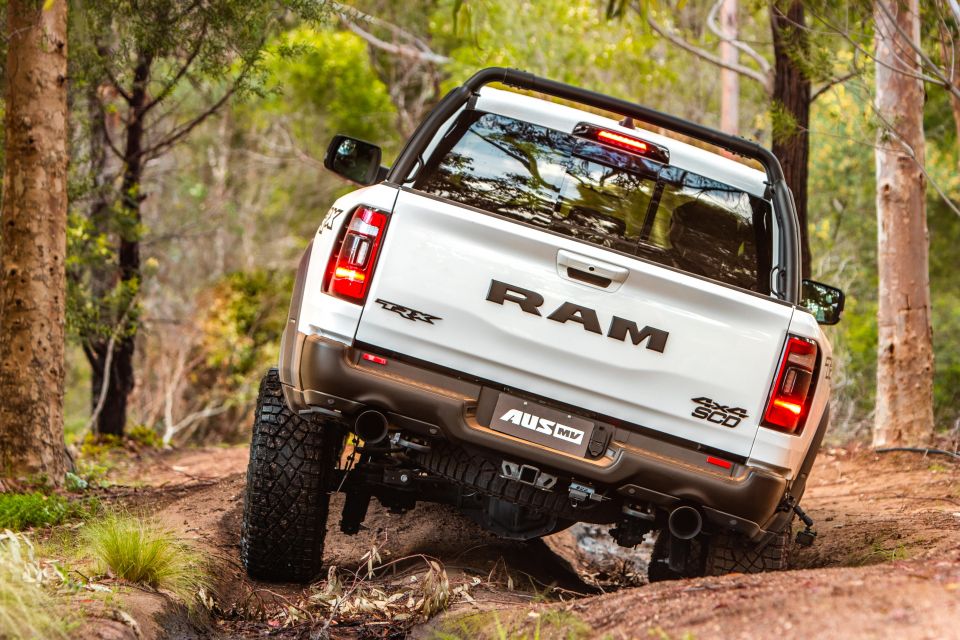
Click the images for the full gallery
MORE: Everything Ram 1500
Where expert car reviews meet expert car buying – CarExpert gives you trusted advice, personalised service and real savings on your next new car.
Paul Maric is a CarExpert co-founder and YouTube host, combining engineering expertise with two decades in automotive journalism.


William Stopford
3 Hours Ago
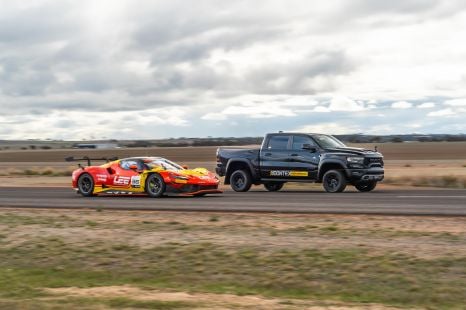

Paul Maric
2 Days Ago


Josh Nevett
2 Days Ago


James Wong
3 Days Ago
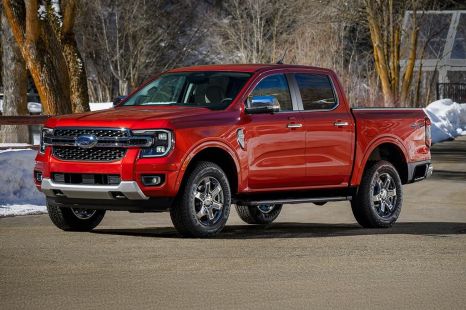

Damion Smy
7 Days Ago


Max Davies
8 Days Ago